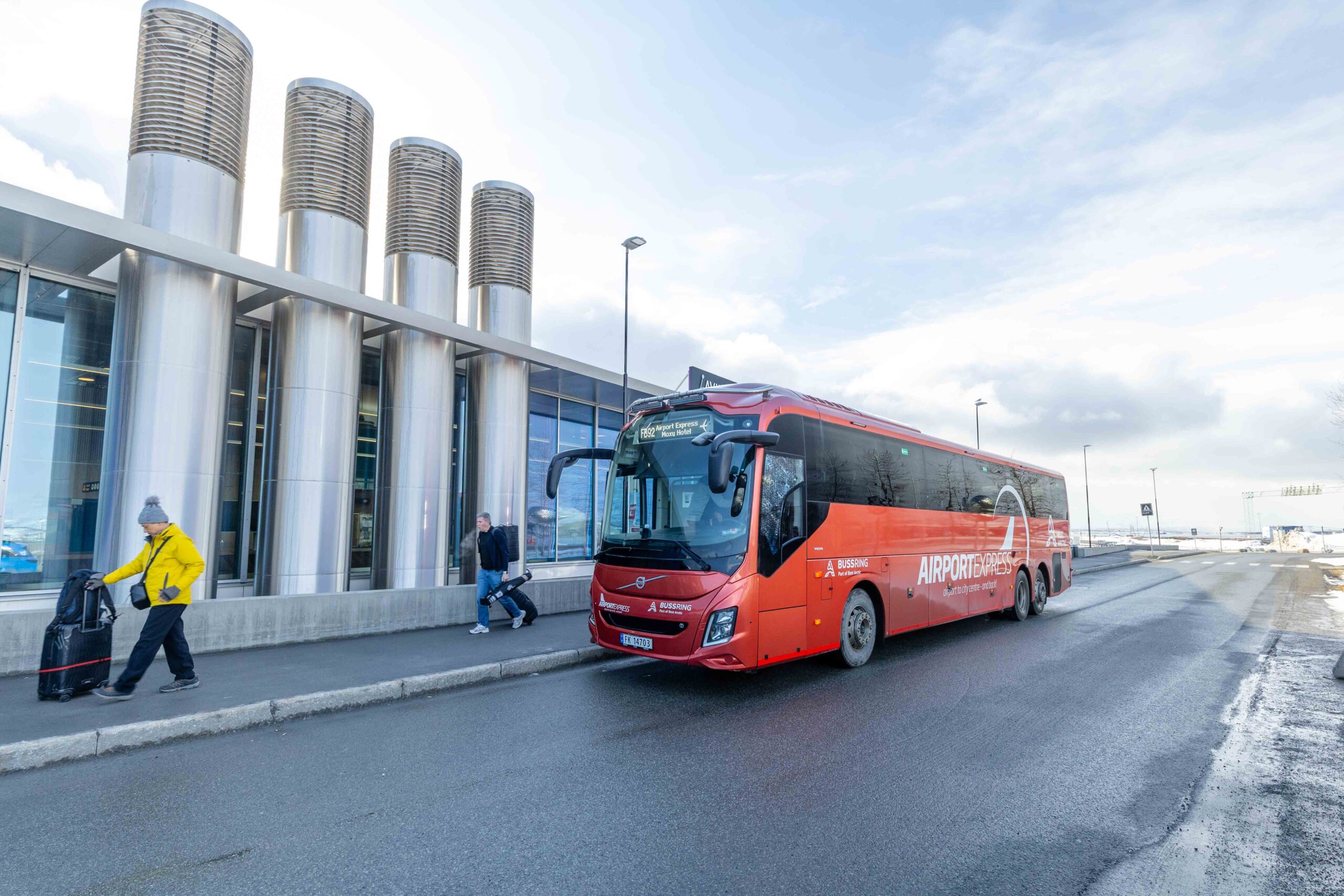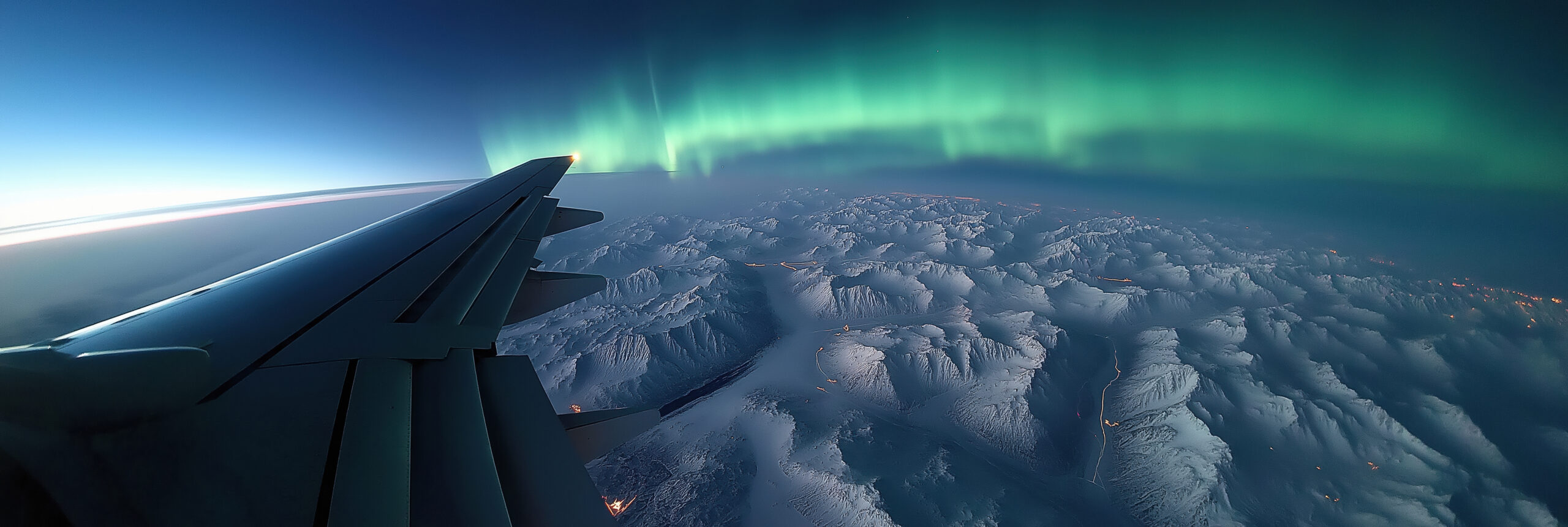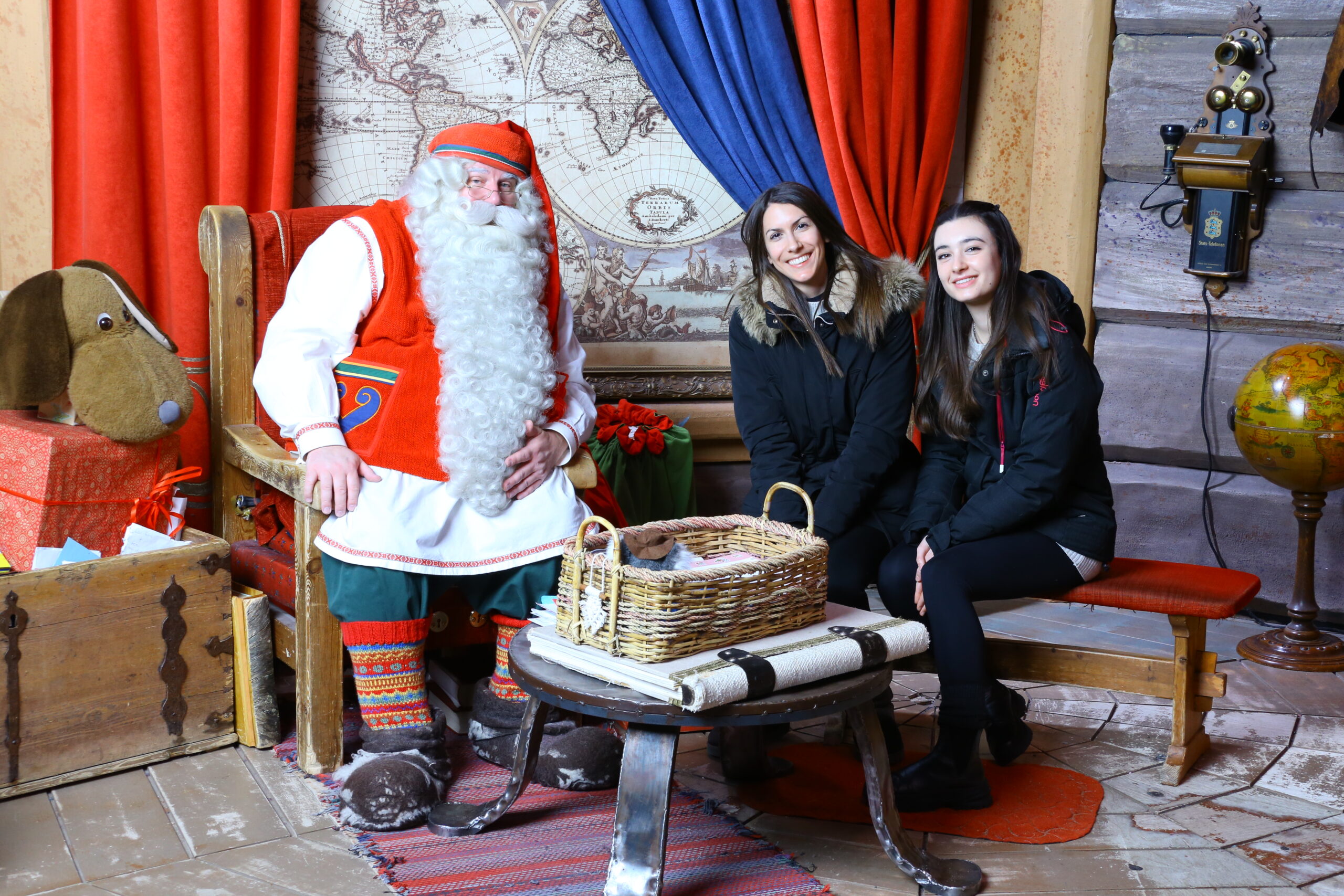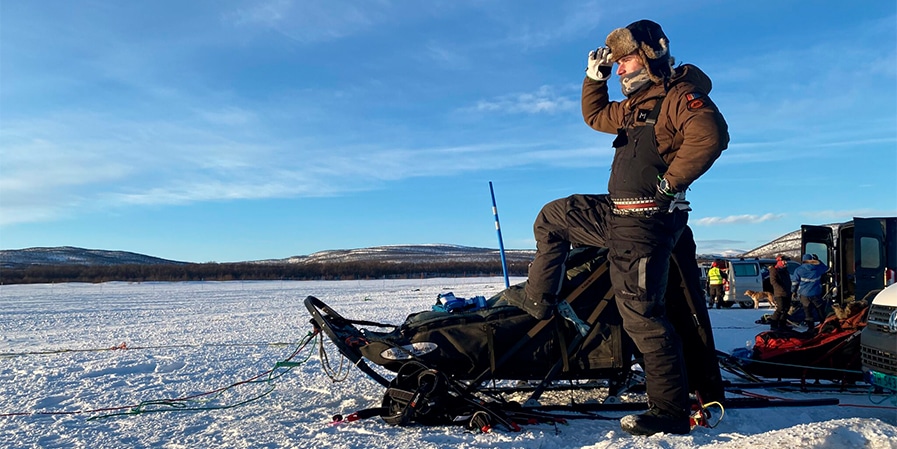
We went to our dog sledding camp in the Tamokdalen valley, where we run our Husky Safari tour throughout the winter season. There, we spoke with one of the main mushers to get his insights about his job. His name is Marcus, and he’s from Nordkjosbotn, just a short drive from the camp.
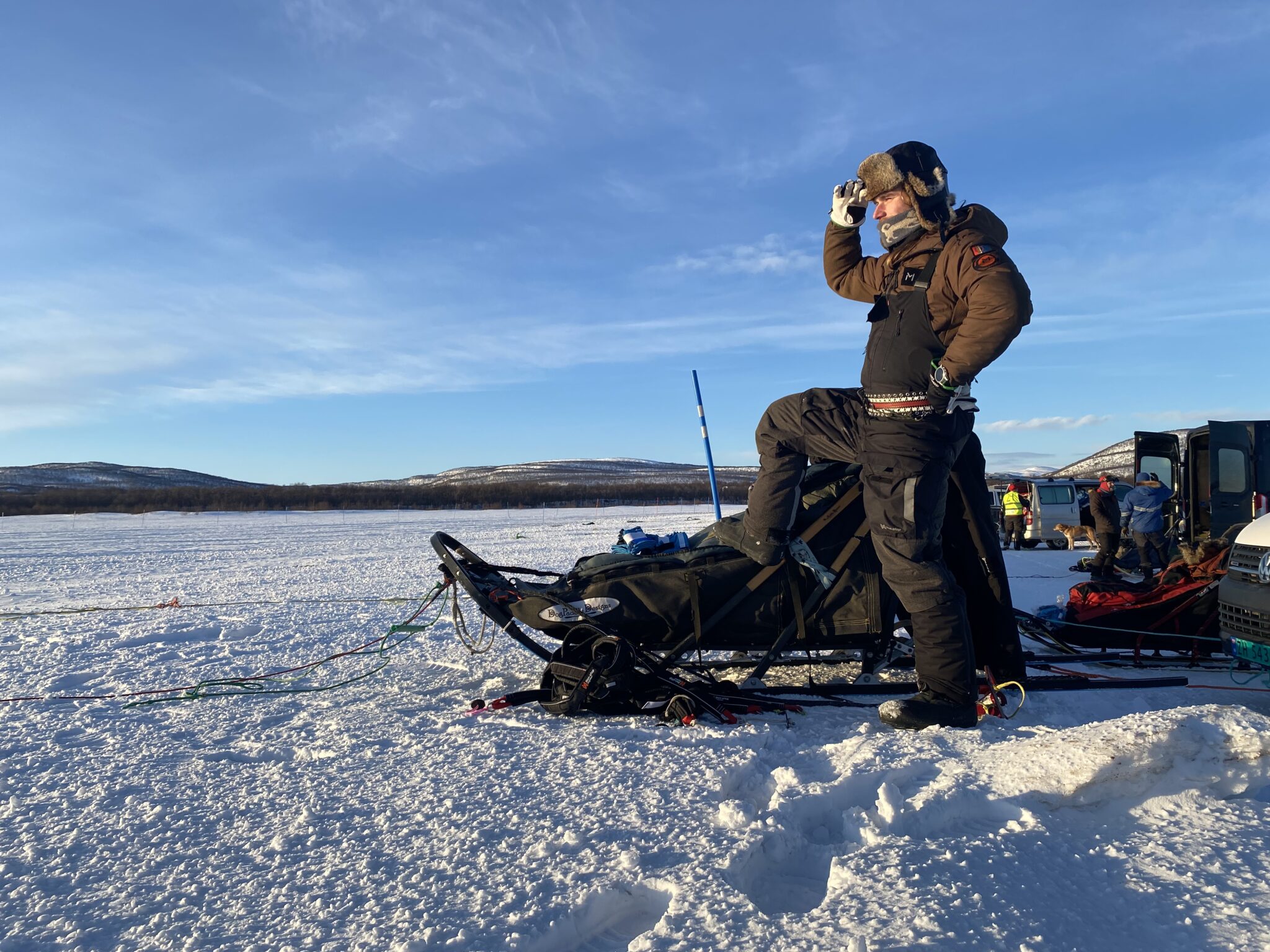
Marcus has been a musher (a sled dog driver) for almost 13 years. In fact, he’s been doing this since he graduated from upper secondary school and completed his military service. Since he loves working with dogs and spending time outdoors, this is the perfect job for him!
A question that often pops up when people meet him during the tours is about the harsh working conditions in the winter here above the Arctic Circle.
He has a unique outlook on that: “I find it fantastic. It’s one of the reasons why I want to work here in Northern Norway. You have such big contrasts between the early and late parts of the season. In the early part of the season, it’s cold and dark, but you have Northern Lights and it’s very special. Then in January and February it’s stormy and windy. In late February and March, the sun returns, and you witness big changes every day. I find it remarkable. I mean, it’s so exciting to experience nature. That’s why I like working outside. You develop coping skills and start to love the really bad weather. Otherwise, it wouldn’t be fun.”
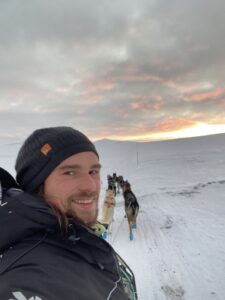
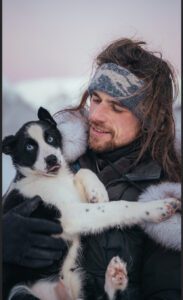
The Polar Night
The Polar Night is a very important part of the daily life in the Arctic. The sun does not rise here for two months (from 21 November until 21 January). He says: “I definitely feel it, but since I have grown up here, I don’t think it affects me as much as some of the other guides that come up here for the season. I’m kind of used to it mentally, but I think why I don’t have problems with it is because it’s twilight when I work outside. But I feel I need a bit more sleep, and I try to make sure I get enough vitamin D in my diet. I also think it’s about enjoying yourself because if you want to go skiing, or any outdoor activity, you can do it. If you have a good head torch, you can do anything!”
What are the most common questions you get during the tours?
- People ask if it’s safe! (laughs)
- How many dogs are there here:
“We have 77 dogs in the kennel. They all have names and personalities.”
- Do people wonder about the wellbeing of the dogs and if they enjoy doing this every day?
“People see how eager the dogs are to go running, and this answers the question for them.”
- Why are these not huskies?
“Alaskan huskies are not bred for aesthetic purposes, so they all look different, it comes from all the other breeds that are present in these dogs, from hunting dogs to huskies. These dogs are bred for athletic and personality purposes.”
- What do the dogs eat?
“They eat a lot of meat; their main meals consist of a thick porridge of meat mixed with high calorie dry feed especially made for working dogs. They don’t get vegetables but get vitamins and minerals supplements.”
- What do they do in the summer?
“In the summer, they are still trained with wheel wagons but have less work as they are susceptible to higher temperatures. For them, over 10 degrees Celsius is dangerous, they need a lot of water and shade and cannot pull that much.”
- What happens with the dogs when they are too old to work?
“Some of them get adopted out in loving homes, especially in the case where they are not healthy enough to stay at the camp. Otherwise, if they are still physically fit, they can stay but will have specifically tailored schedules to accommodate their age and capacity.”
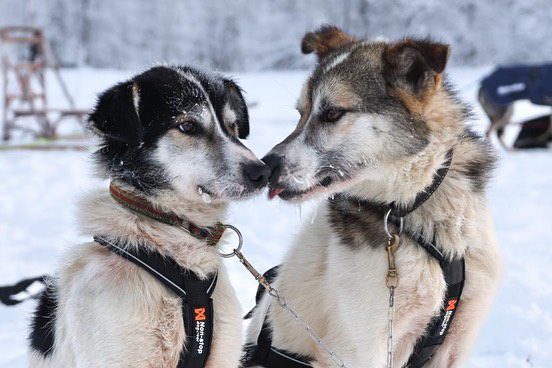

Funny stories
As we concluded this interview, he told us about a hilarious incident that occurred last season. A family with a small chihuahua dressed up in a full winter suit asked if the chihuahua could join the tour as a dog sledding dog. The guides couldn’t allow it as the chihuahua would not be safe with the other dogs, who would probably see her as a snack. In the end, she stayed at the camp and made friends with the guides.
Some other times, you would have dogs in heat making babies on the track during the tour, and everyone had to wait 30 minutes for them to be done with it.
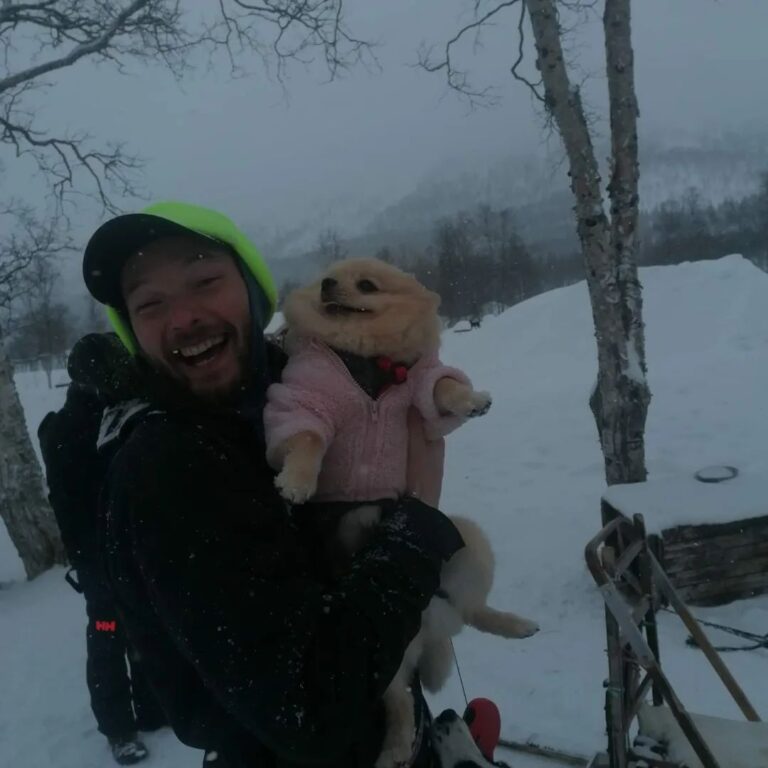
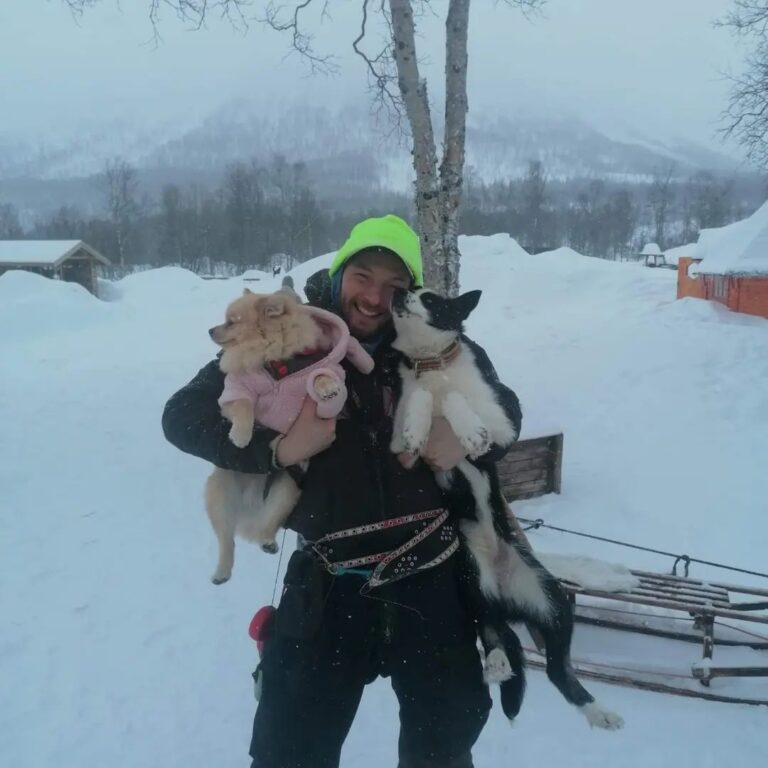
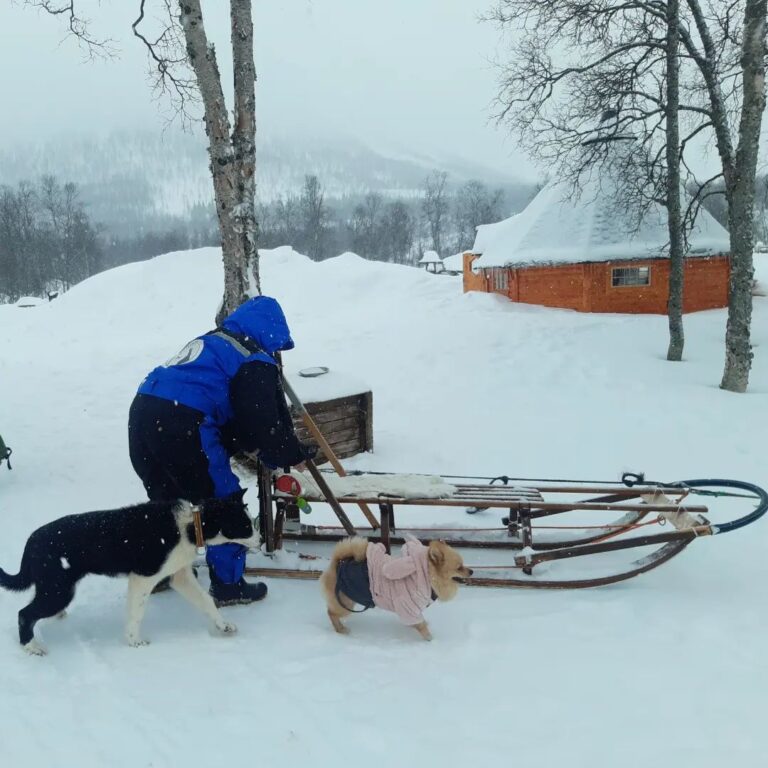
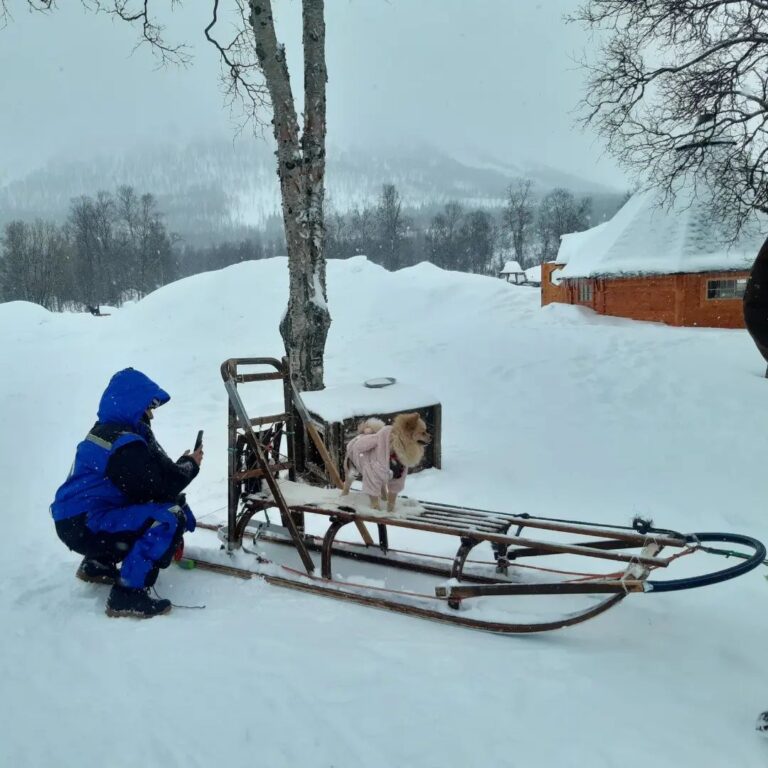
Join Marcus
If you would like meet Marcus and the dogs that he takes care of, we recommend joining our check out this page for more information.

